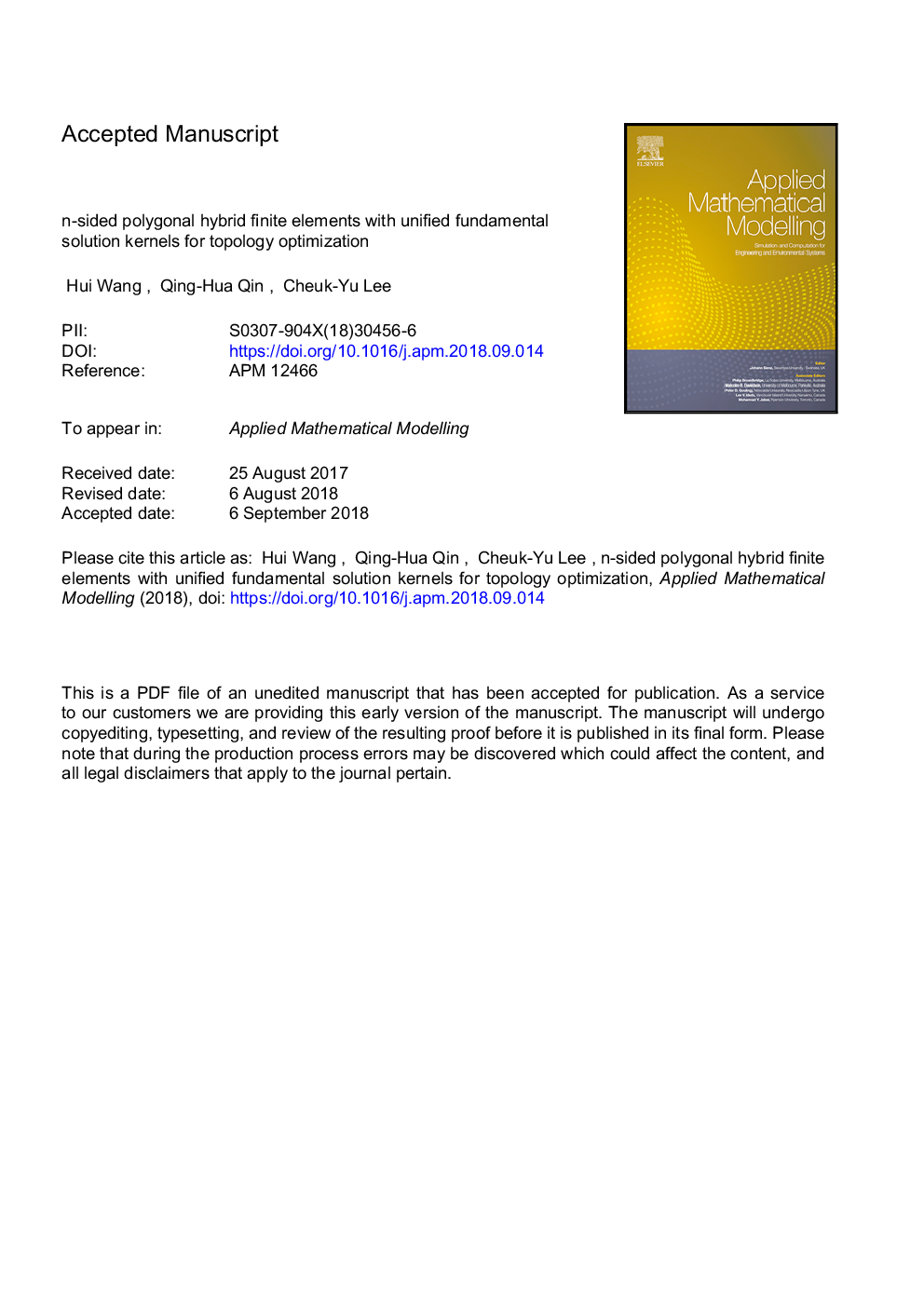| Article ID | Journal | Published Year | Pages | File Type |
|---|---|---|---|---|
| 11026482 | Applied Mathematical Modelling | 2019 | 35 Pages |
Abstract
In topology optimization, the optimized design can be obtained based on spatial discretization of design domain using natural polygonal finite elements to reduce the influence of mesh geometry on topology optimization solutions. However, the natural polygonal finite elements require separate interpolants for each type of elements and involve troublesome domain integrals. In this study, an alternative n-sided polygonal hybrid finite element possessing multiple-node connection is formulated in a unified form to compress the checkerboard patterns caused by numerical instability in topology optimization. Different from the natural polygonal finite elements, the present polygonal hybrid finite elements involve two sets of independent displacement fields. The intra-element displacement field defined inside the element is approximated by the linear combination of the fundamental solution of the problem to achieve the purpose of the local satisfaction of the governing equations of the problem, but not the specific boundary conditions and the inter-element continuity conditions. To overcome such drawback, the inter-element displacement field defined over the entire element boundary is independently approximated by means of the conventional shape function interpolation. As a result, only line integrals along the element boundary are involved in the computation, whose dimension is reduced by one compared to the domain integrals in the natural polygonal finite elements, and more importantly, allowing us to flexibly construct any polygons from Voronoi tessellations in discretizing complex design domains using same fundamental solution kernels. Numerical results obtained indicate that the present n-sided polygonal hybrid finite elements can produce more accurate displacement solutions and smaller mean compliance, compared to the standard finite elements and the natural polygonal finite elements.
Related Topics
Physical Sciences and Engineering
Engineering
Computational Mechanics
Authors
Wang Hui, Qin Qing-Hua, Lee Cheuk-Yu,
